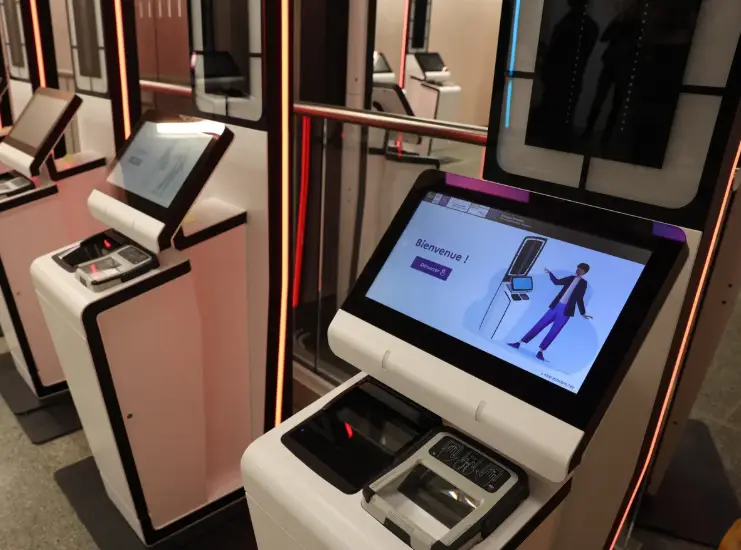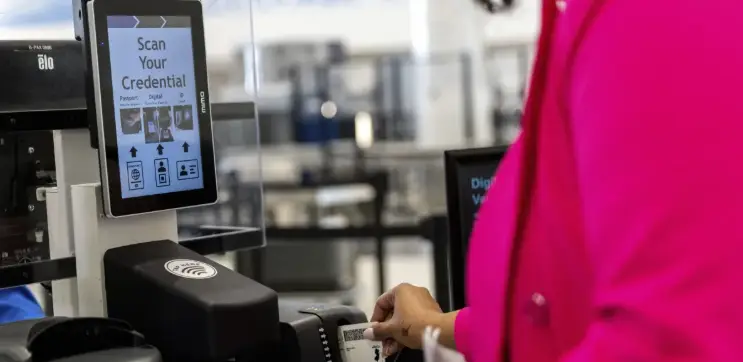New Travel Rules Begin in October 2025
Australians who want to travel to Europe will see significant changes made by the introduction of the EU Entry-Exit System 2025, which starts operating on 12 October 2025. The new European Union border management system will eliminate the conventional process of stamping passports by using an entirely digital database for travellers entering and exiting the Schengen Area.

The system will enrol biometric information, including fingerprints and facial scans, of all non-EU citizens who will be making short visits to Europe. It will be developed to facilitate border security, enhance border checks and track the 90-day limit imposed on the 180-day travelling rule.
The New Entry Exit System, and what it represents to Australians
With the EU Entry-Exit System 2025, Australians making visits to Schengen countries will give biometric information at border terminals. Such a procedure will capture face images and fingerprints to form a personal digital record that will be used when travelling in the future.

The new system will replace passport stamps with biometric scans to record entry and exit data.
When the system becomes operational, the use of the traditional passport stamps will be phased out. Instead, the electronic records will automatically record the entry and exit dates to ensure accuracy in monitoring the stay time within the visa-free period granted to Australians.
Border Delays that are likely to happen during the first rollout
The entry-exit system 2025, expected to start soon, anticipates longer queues at European ports and borders. Travellers will find the process slower because officers are adapting to the new biometric procedures.

Longer queues may occur during the first months as the biometric system is introduced across Europe.
Australian authorities have urged passengers to arrive early enough to undergo border inspections, especially in the initial months of the implementation period. The travel agencies and airlines are supposed to give out instructions that would minimise delays and misunderstandings among the travellers.
Measures of Data storage and privacy protection
The biometric and personal data acquired by the EU Entry-Exit System 2025 will be retained in a safe place for 3 years. The information will be restricted to authorised EU border agencies to verify travel and control immigration.
The European Union has assured people that the system has strict data protection requirements as mandated under the EU law. This guarantees that personal information like fingerprints and facial scans will not be applied in other areas other than border management.
Transfer to a Digital Age of Border Control
The initiation of the EU Entry-Exit System 2025 will mark a significant shift in the direction of digital border management in Europe. The EU aims to enhance efficiency and achieve stricter control over entry and exit records by replacing manual passport checks with automated ones.
To the Australian traveller, this shift equates to a more organised process at the locations of arrival. After enrollment in the system, subsequent visits will be quicker since manual stamping of passports will be eliminated in favour of a biometric verification system.
ETIAS Travel Authorisation to Follow in 2026
After the introduction of the EU Entry-Exit System 2025, Australians will have to start preparing for the European Travel Information and Authorisation System (ETIAS), which will commence towards the end of 2026. ETIAS will operate similarly to the ESTA system of the United States, necessitating pre-travel approval online.
The travellers, be they tourists, businesspersons, or short-term visitors, travelling to Europe will require ETIAS authorisation before arriving on the continent. This will entail giving passport information, personal details and a little application fee.
Travel Under the New System Preparation
The traveller should also stay informed about changes in the EU Entry-Exit System 2025, which is updated by official sources like Smartraveller and the European travel portal. It is advised that Australians become conversant with the biometric registration process before their next trip to Europe.
Frequent travellers to several countries in the Schengen region can benefit from registering early and familiarising themselves with the facilities at airports where they know there are self-service kiosks to clear the border faster.
Also Read: WA Appeal of Dion Barber’s Compensation Win Draws National Attention
Final Thoughts
The EU Entry-Exit System 2025 marks a new dawn in international travel with the introduction of automated systems instead of manual passport controls. To Australians, it will offer increased efficiency and accuracy on the European borders, but there could be delays at the start of the transition as the technology is introduced.
Australian travellers can make their trip to Europe smoother by making preparations and being aware that the system will be in effect on 12 October 2025. The changes indicate that the European Union is still moving towards complete digitisation and a secure border management process.
FAQs
1. What is the EU Entry-Exit System 2025?
The EU Entry-Exit System 2025 (EES) is a new digital border control system for the Schengen Area. It replaces manual passport stamping with an electronic process that records when and where non-EU travellers enter and leave Europe.
It also stores biometric data and travel information to track stays within the 90-day limit allowed for short visits.
2. When will the EU Entry-Exit System start?
The system is scheduled to begin on 12 October 2025. A six-month rollout phase will follow, and full operation is expected by April 2026.
3. Who will need to register under the EES?
All non-EU nationals, including Australians, who enter the Schengen Area for short stays will need to register.
This includes both travellers who do not require a visa and those who hold short-stay visas.
4. What data will the system collect?
The EU Entry-Exit System 2025 will collect each traveller’s facial image, fingerprints, and passport details.
Visa-exempt travellers will provide four fingerprints and a photo, while visa holders’ fingerprints will already be stored from their visa applications.
Children under 12 years old will only have a facial image taken.
5. How long will biometric data be stored?
All collected data will be stored for three years from the date of entry.
During that period, returning travellers will not need to re-submit full biometric data but will instead undergo a quick verification at the border.
6. Will passport stamps still be used after 2025?
Passport stamps will continue temporarily during the transition phase.
By April 2026, physical stamps will be phased out and replaced entirely with digital records created by the EES.
7. Can a traveller refuse to provide biometric data?
Travellers cannot refuse biometric registration. Those who decline to provide fingerprints or facial scans will be denied entry into the Schengen Area.
Many airports will offer self-service kiosks and mobile registration options to simplify the process.
8. How will this affect Australian travellers?
Australians visiting Europe may experience longer processing times during the system’s early rollout.
From 2026, Australians will also need to apply online for ETIAS authorisation before entering Schengen countries.












